Have science and math felt difficult to teach in your classroom lately? It can be hard to stir excitement among our students with these topics! I’ve been there, and it can be really frustrating. If you find yourself stuck in a bit of a teaching rut too, no worries. I’ve got some awesome tricks up my sleeves to help you flip the script! Get ready because I’m about to show you how to unleash exciting STEM curriculum in your classroom!
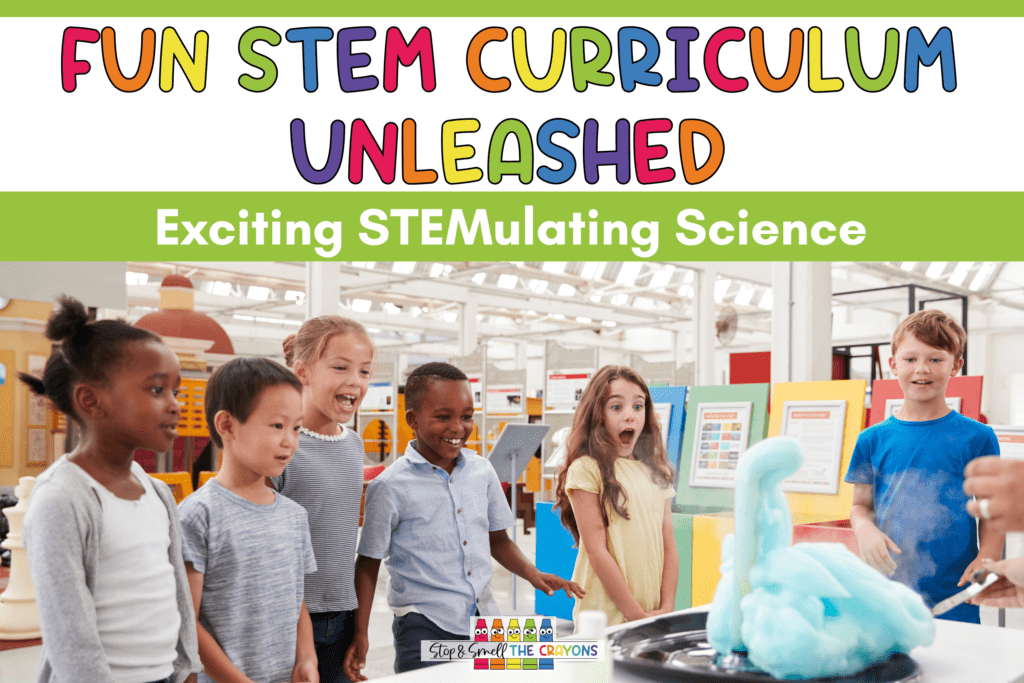
Getting Students Excited About STEM
I personally love the start of new units! However, it comes with a sort of awkward feeling I’m sure you and I have both experienced. It’s that moment when you’re trying to get kids pumped up about the wonders of science, and in return, they just stare at you blankly. Ever had this occur in your room?!
It’s not always a walk in the park, and it’s definitely not the jumping up and down with joy and cheering you imagine in your head. Unless, of course, you’re actually setting something on fire or creating a mini-explosion. Now, that might grab their attention! But alas, that isn’t usually on our lesson plan.
Science and math are super important for our kiddos’ futures, but they can be a bit tricky for our students. With STEM (Science, Technology, Engineering, and Math) taking the spotlight, it’s the perfect moment to make learning these subjects a total blast. How? We incorporate a fun STEM curriculum that is engaging and exciting no matter the challenge! Here are some of my top tips to get started!
Tip #1 Start at the End
One of the best ways to get students hooked is to start with the end result. Take some time to show them what all their new knowledge is going to allow them to do. By unveiling the “reward” right at the start, you’re setting the stage for increased engagement throughout the learning journey.
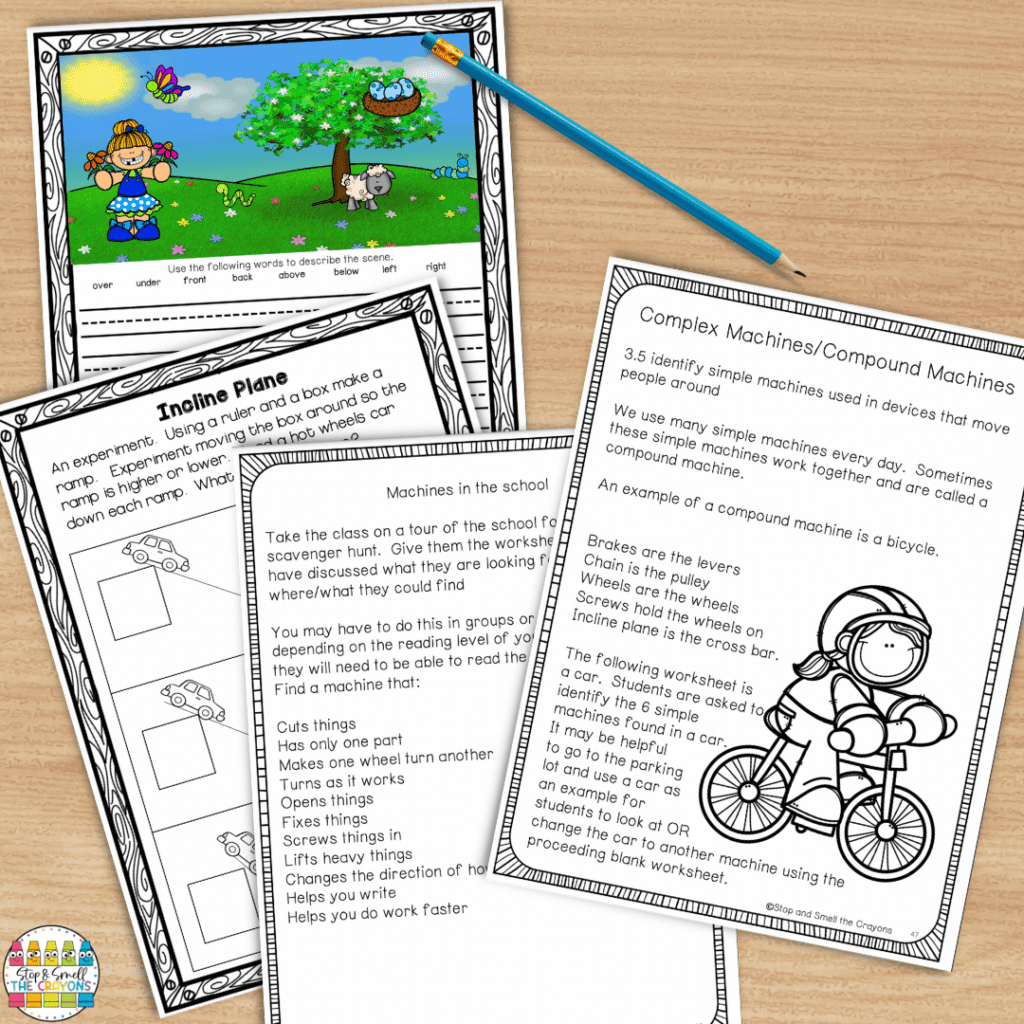
Let’s take a simple machine unit. Instead of diving straight into the nuts and bolts, start by demonstrating what a single simple machine can achieve by itself. Then build up to a simple machine’s broader impact on a larger scale.
In my Simple Machines unit, your learners will explore levers, pulley systems, screws, and more. Learning takes the form of hands-on activities, exciting experiments, and scavenger hunts to explore how these simple machines help us navigate the world around us!
By modeling what a simple machine can achieve before starting these lessons, you’ll be setting the stage for excitement and curiosity about this unit before you even begin!
Fun STEM Curriculum Tip #2 Add a Little Art
Time to spice up science and math! When your students are in a creative mood, throw in some artistic activities. Transform those lessons and equations into crafty wonders. This works amazingly well, especially when diving into the world of the environment or living things. Imagine coloring trees, sketching body parts, and more. It’s like injecting life into a living things unit, pun intended!
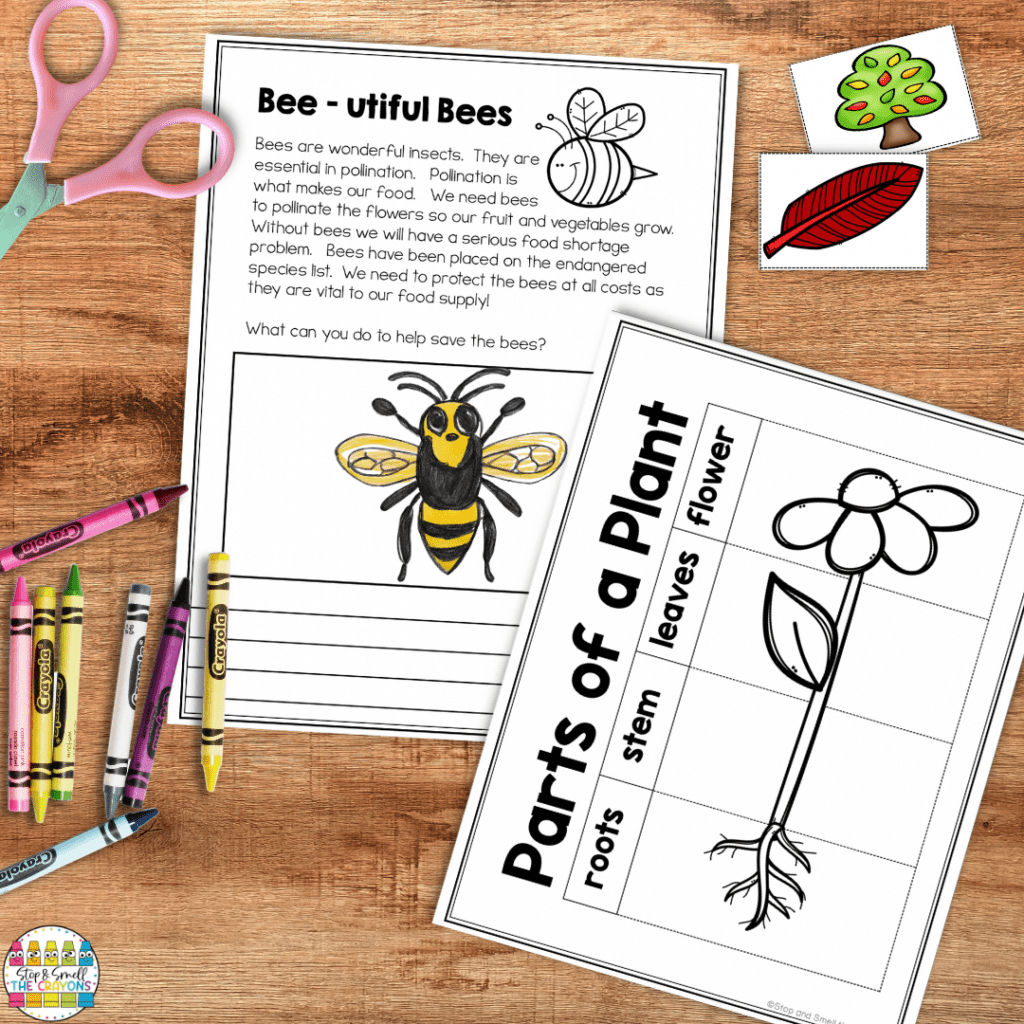
In my Needs and Characteristics of Living Things unit, your young learners will explore topics from the human body to environmental factors to the basic needs of living things.
They’ll engage with worksheets, hands-on activities, and STEM challenges to help make learning the characteristics of living things a breeze!
Art is so much fun for students, but it’s also the ultimate “brain break.” Whether your students need a breather or you want to get a bit ahead during downtime, art is the perfect solution.
Let the creativity flow, turn science into a masterpiece, and watch those brains recharge for more fun STEM curriculum activities!
Fun STEM Curriculum Tip #3 Take it Outside
Let’s talk about one of the best things you can ever do for your students as a teacher —heading outdoors! Seriously, taking your class for a walk beats sitting at a desk any day. Not only does it amp up the excitement levels, but it’s also a golden opportunity to dive into the wonders of the world around us.
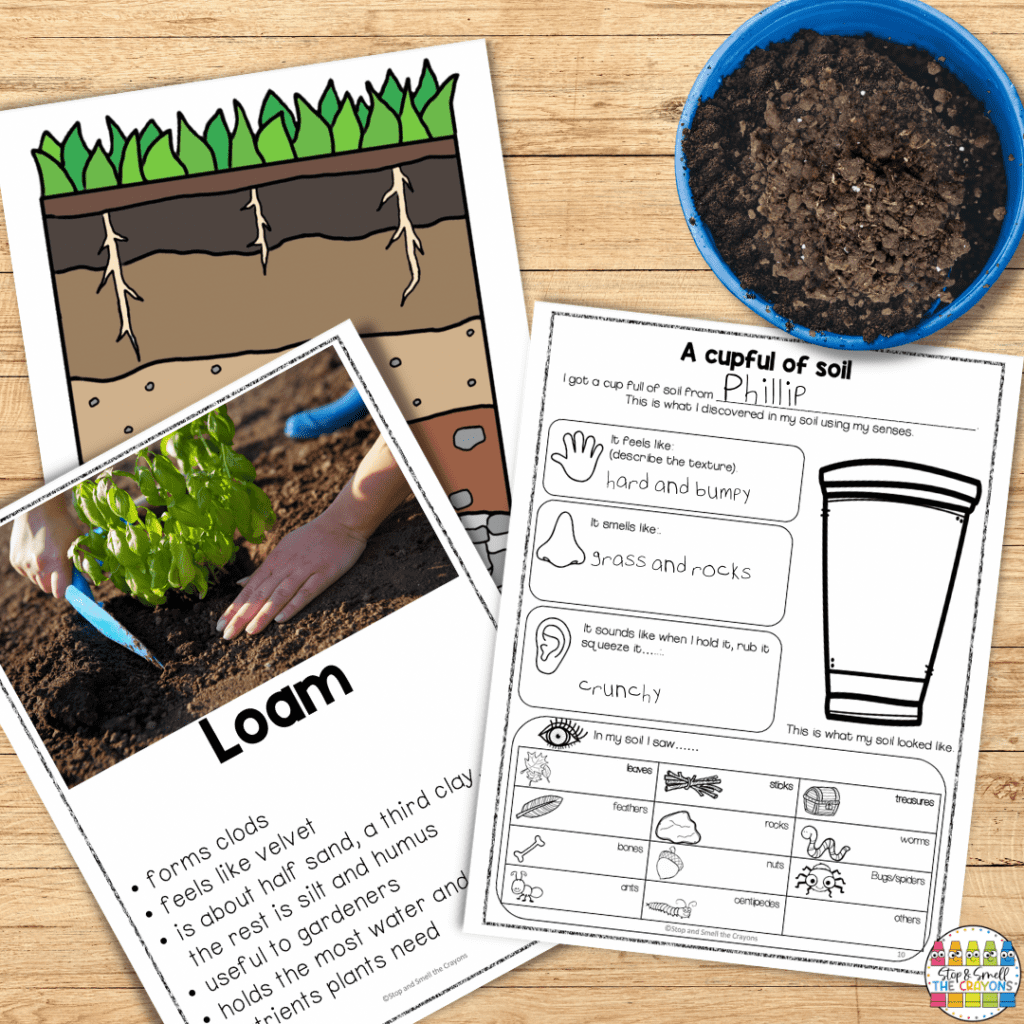
You’re out there exploring rocks, checking out the soil—basically, being science detectives in the great outdoors. If you’re in a spot where the weather’s playing nice, why not plant some veggies or grow some grass in different types of soil? This gets your students outside, observing growth and how different soil ingredients work. It’s a mini science adventure right in your own schoolyard.
Dig into the world of soils with the Soils in Environment unit! Your learners will explore the different soil types, root systems, composting, and erosion.
Now, if the great outdoors isn’t an option, fear not! You can still make things exciting. How about appointing a “weather person” to give a daily report on what’s happening outside? Then you can talk about what type of science goes into making the weather they are seeing outside. Even consider reaching out to your local news station’s weather person to see if they could come to visit your classroom or talk with your class through a video call! Rain or shine, indoors or outdoors, you’re turning every moment into fun STEM curriculum magic!
Fun STEM Curriculum Tip #4 Plug It In
If you can’t take your class outside due to Mother Nature throwing a snowy curveball or a hurricane dance party, no biggie. I’ve got a backup plan that’s sure to make your students’ day. Bring the fun inside to their favorite realm: electronics!
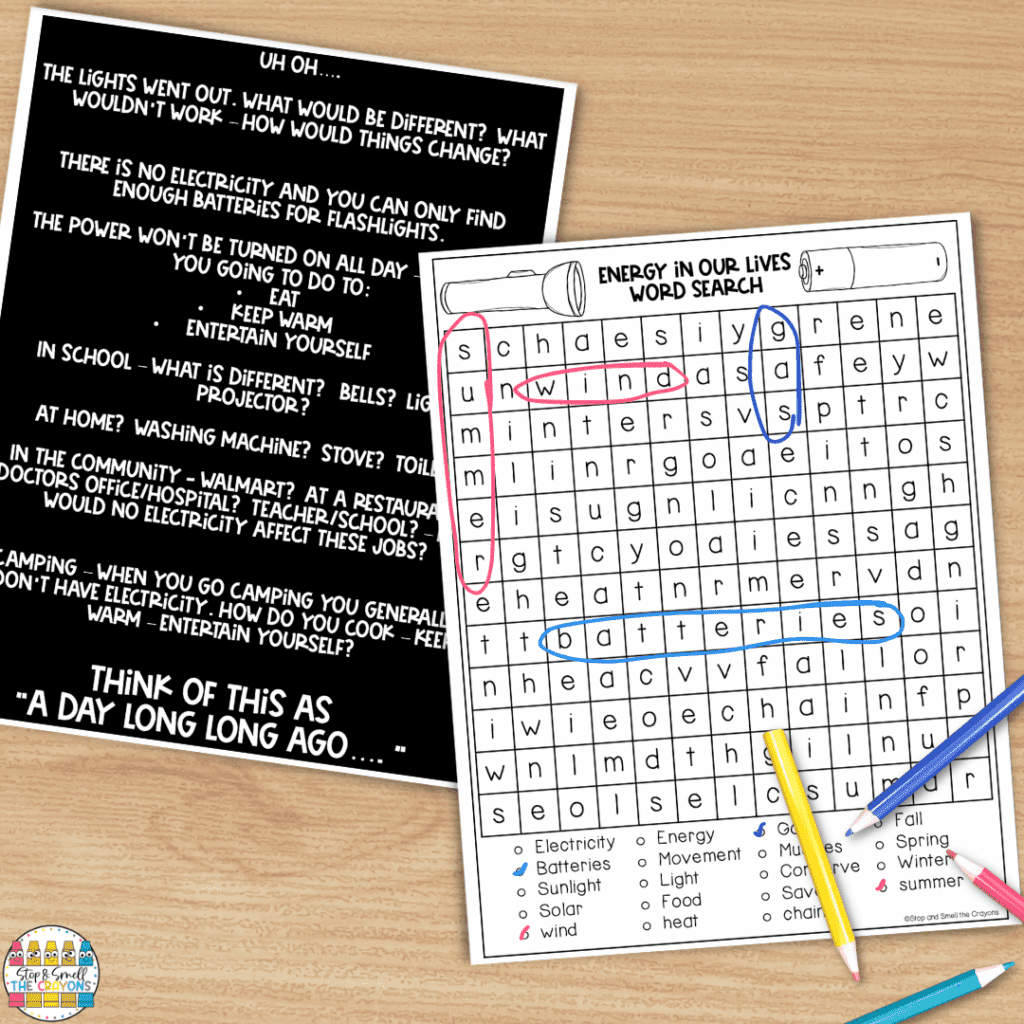
By talking about the sun, energy consumption, and energy conservation, you teach your students what it takes to power their video games, tablets, computers, and their basic light sources.
To make this fun STEM curriculum more relatable, you can even allow students to play some digital games or use some of these devices in your room. Check with your district’s policies first!
In the Forms of Energy unit, your students will be able to learn the ins and outs of energy and understand the crucial role it plays in our lives. They’ll learn what energy is, the sun’s role, food as fuel, electrical energy, safety guidelines, dealing with a power outage, and seasonal energy uses. Engaging lessons with hands-on activities, word searches, task cards, and a cool hands-on project to design and construct an energy device make up a fun STEM curriculum.
As you unravel the mysteries of different energy sources, you’re not just teaching. You’re giving them a behind-the-scenes glimpse of something we all kind of take for granted. Talk about creating some appreciation!
Fun STEM Curriculum Tip #5 Display It
Let’s spice up your classroom with some hands-on STEM projects by showcasing them right in the heart of your learning space. Set up a corner for soil experiments and another for water wonders, and let your students dive in. Get them in on the action by helping label each experiment.

Add an “observation journal” for each area, complete with a designated daily observer (because everyone loves taking charge!). This person would, of course, change every day to keep everyone involved. Want to turn it up a notch? Make each student the author of their own observation journal and turn those STEM areas into buzzing learning centers. Encourage them to talk about their observations.
In the Air and Water in Environment unit, students will explore each part of the water cycle, air temperature, water shortages, conservation, air and water pollution, and states of water.
Making and displaying experiments in your classroom keeps your students interested and talking about the fun STEM curriculum you are sharing with them.
Bonus Tip: Recognize Students for a Job Well Done
If you’re looking for one more way to excite your students, weave in some character counts curriculum with your STEM lessons. Celebrate your students’ achievements and character growth with my vibrant collection of recognition certificates!
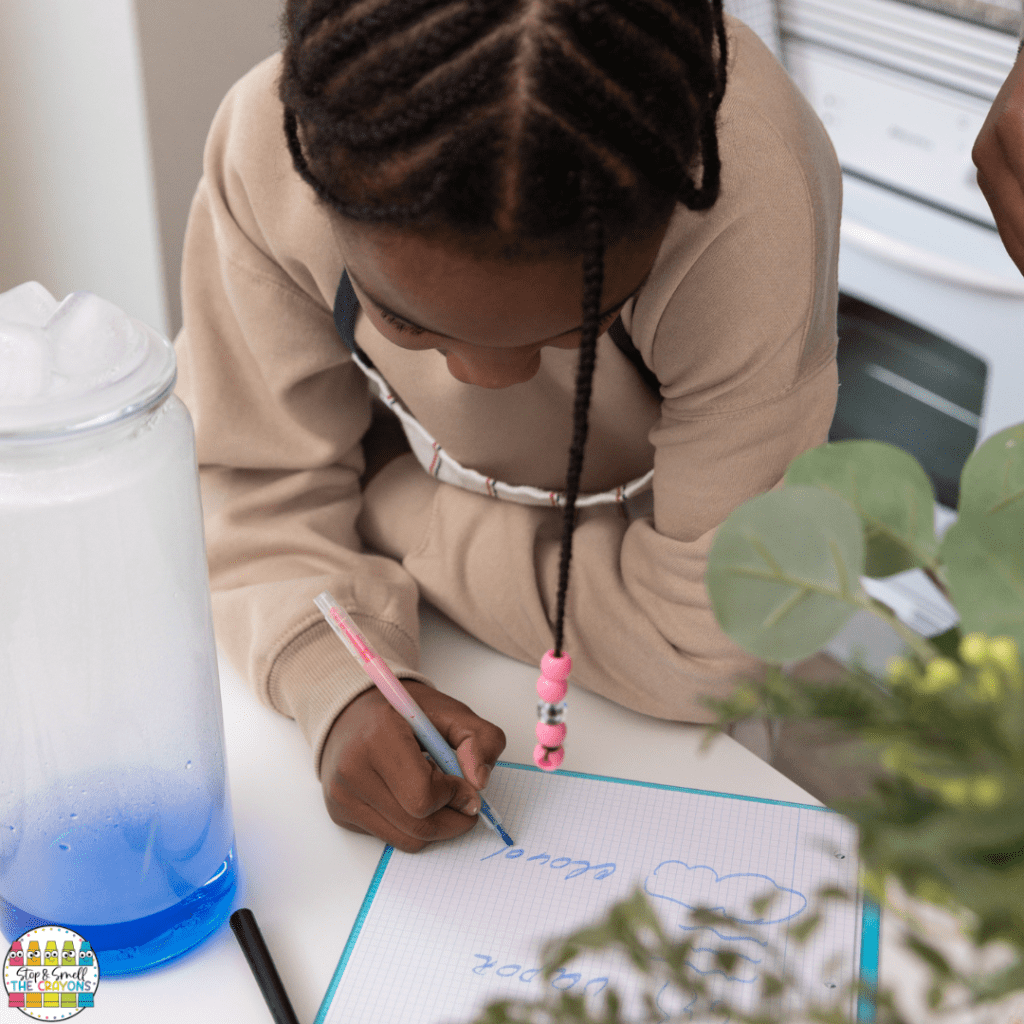
From “One Smart Cookie” to “Great Helper” to “Wise Owl,” these certificates don’t only acknowledge academic accomplishments. They also celebrate the positive character traits that make each student unique. Encourage discussions and written reflections on the ripple effect that one person’s positive actions can have on a classroom community. This creates a wonderful way to foster a supportive and encouraging environment while participating in a fun STEM curriculum!
Getting our students pumped about STEM activities is handing them the keys to a better future. When we whip up a fun STEM curriculum, we’re not just filling their heads with facts. We’re sparking a passion for creating an improved and more knowledgeable tomorrow. We’re turning our students into future citizens who’ll tackle the challenges of our world head-on. It’s about gearing up the next generation to be the problem solvers and eco-warriors we need.
Pin it!
Be sure to save these awesome STEMulating science activities to your favorite teacher Pinterest board today!
